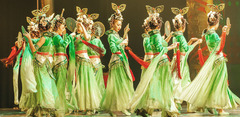The build-up to New Year’s celebrations is exciting. The all-famous countdown, the popping of champagne corks, and the cheers of “Happy New Year” mark the change in calendars from December 31 to January 1 with glamour. The iconic ball drop in Times Square in New York City is viewed by millions of spectators and broadcast to hundreds of millions of TV viewers around the world in a show of glitz, fascination and excitement. However, New Year’s history dates back some 4,000 years and centred on an agricultural event.
Find out more about New Year’s Eve and Day in this article where we delve into the fascinating history of this celebration and why it is so important to many peoples around the world.
What is the history of New Year’s?
The first celebrations for New Year’s can be drawn back 4,000 years to Ancient Babylon. Back then, the first day of the New Year was actually marked in late March. It was a religious celebration heralding the start of a new year when the first moon following the vernal equinox (which is a day of equal sunlight and darkness) occurred.
Why is New Year’s History Important?
As with our birthdays, New Year’s is celebrated to reflect on the past year, look back at the highs and lows, take stock of ourselves, and resolve to do better in the next year. With its roots in agricultural seasons, a change from one season to the next, it is easy to understand the celebration of New Year’s and symbolism that such a change brings. In its most simple understanding, it is a celebration of passing through another 365 days to keep track of our lives. Since the Ancient Babylonians to the present day, this has been true.
Origin of New Year’s:
Moving from December 31 to January 1 was for the first time celebrated in 45 B.C. by Julius Caesar. The Roman leader demanded a new Roman calendar and enlisted astronomers and mathematicians to create a new calendar. Previously, from 700 B.C., the Roman’s based their calendar on a lunar cycle, but this proved to be troublesome. It was astronomer Sosigenes who advised Julius Caesar to adopt a calendar based on the solar cycle instead of the lunar cycle, just as the Egyptians did. Once the Julian calendar was implemented, they calculated a calendar year as we know it today.
That’s not all, though. In the late 15th century, it became clear the Julian calendar was incorrectly calculated. It was during the Middle Ages, when New Year’s Day fell in the middle of January, that the Church under Pope Gregory XIII implemented the Gregorian calendar in 1582. Ever since people have celebrated January 1 as the New Year.
New Year’s Resolutions History:
The history of New Year’s Resolutions is also drawn back to the Ancient Babylonians 4,000 years ago. The first recorded Resolutions were made by Babylonians to their gods to pay their debts and return any objects they had borrowed. They believed that if they, the Babylonians, kept their promises, the gods would protect them for the coming year. However, if they didn’t, they would fall out of favour with their gods.
In the times of Rome’s Julius Caesar, the month January was named after the Roman god Janus. According to legend, this god was two-faced: symbolically, Janus looked back into the previous year and ahead into the future. The Romans honoured Janus by offering sacrifices on January 1 and resolved to offer improved conduct for the year ahead.
More recently, in the 17th century, it became traditional for Christians to mark the first day of the New Year by contemplating their past mistakes and resolving to do better in the New Year.
Today, instead of honouring gods and deities, resolutions are promises people make to themselves and are mostly centred on self-improvement.
History of New Year’s Eve:
New Year’s Eve has been around as long as New Year’s Day, with the Ancient Babylonians celebrating the change of season with an eleven-day-long festival. As we’ve established, New Year’s was marked in mid-March with the vernal equinox (which is a day of equal daytime and nighttime). Their festivities coincided with the vernal equinox as the highlight of the occasion.
New Year’s History Facts:
They held the first ball drop in Times Square in New York City in 1904. This occurred when the newspaper The New York Time moved into Longacre Square, which was renamed Times Square in honour of this. The owner of the newspaper threw a lavish party with a fireworks display at the end of that year in celebration. In 1929, Guy Lombardo sang “Auld Lang Syne” on a radio broadcast from New York City’s Roosevelt Hotel at the strike of midnight, creating an instant tradition that is honoured to this day.
Closing:
No matter how you celebrate New Year’s, the history of this occasion is steeped in festivities, fireworks, and fun. The more you know about New Year’s Eve and Day, the more you will appreciate the significance of the simple action of 1 second in time ticking over from December 31 to January 1. It is a time for reflection of the past and resolution for better in the future.
Call-To-Action:
In this article, you will find more about New Year’s history to better understand its significance and importance in society today.






